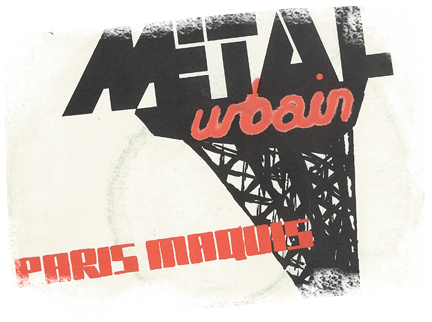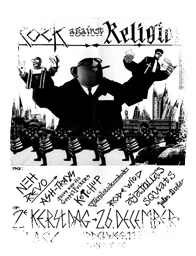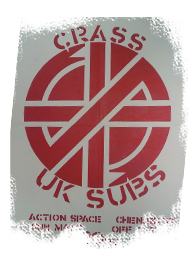ANARCHY
Désillusion à l’égard des idéaux révolutionnaires, fascination pour la violence et le terrorisme, compromission ou radicalisation : le punk se construit sur des postures politiques contradictoires, quand il ne se contente pas d’arborer indifféremment logos et signes de toutes provenances. Disillusion towards revolutionary pretension, justification of violence, fascination with terrorism, compromise and radicalization: punk rested upon contradictory political positions, when it didn’t content itself with brandishing logos and signs from all provenances.


Désillusion à l’égard des prétentions révolutionnaires, apologie de la violence, fascination pour le terrorisme, compromission ou radicalisation : le punk se construit sur des postures politiques contradictoires, quand il ne se contente pas d’arborer logos et signes de toutes provenances. Dès 1976 cependant, les morceaux emblématiques de Clash, comme « White Riot », adoptent un contenu ouvertement politique. Mais il faut attendre 1977-1978 pour qu’une imagerie punk solidement engagée à l’extrême-gauche puisse devenir visuellement explicite, chez eux et chez d’autres. Disillusion towards revolutionary pretension, justification of violence, fascination with terrorism, compromise and radicalization: punk rested upon contradictory political positions, when it didn’t content itself with brandishing logos and signs from all provenances. As early as 1976, however, the anthematic pieces of the Clash, such as “White Riot”, adopted an overtly political content. But it wasn’t until 1977–78 when punk imagery became firmly committed to the extreme left that its imagery could become visually explicit, either with the Clash or other bands.


Le groupe Crass, dénonçant Clash comme vendu au capital, construit toute son activité sur l’engagement politique et social. Il fonctionne comme un collectif, dont l’imagerie est confiée à Gee Vaucher. Son logo combine tous les symboles de l’oppression, au nom d’un message anarchiste. Son esthétique inspire à partir de la fin de 1978 le collectif hollandais Raket, dont le groupe Rondos est l’émanation la plus visible. Se servant des textes et des images comme autant d’instruments de propagande, Clash, Crass et Raket, avec de fortes différences, veulent changer la société et non pas crier « No future ».. The group Crass, denouncing the Clash as stooges of capital, based all its activity around its political and social purpose. It worked as a collective and entrusted its imagery to Gee Vaucher. Its logo combined all the symbols of oppression, in the name of an anarchist message. Its aesthetic inspired, from the end of 1978, the Dutch collective Raket, whose group the Rondos was its most visible manifestation. Using texts and images as instruments of propaganda, the Clash, Crass and Raket, all with their marked differences, wanted to change society and abjured shrieking No future.







